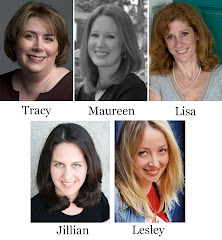I know I should, but when I’m writing, my mind just doesn’t want to work that way. It doesn’t want to organize, outline or try to plan ahead. Truthfully, I’m more of a character driven writer, so plot never comes easily to me, and there is generally no rhyme or reason to my plotting, at least in my first drafts. I almost always start a book with an idea, a specific scene, a few characters in my head. The inciting incident must be entirely clear to me before I begin writing. And then I just sort of go from there, figuring it out piece by piece, chapter by chapter, as I go along. Usually, I’ll have a vague idea of where the climax or second turning point of the book might be, and I’ll write towards that. But often, that idea changes as I go along.
Then when I’m finished with the first draft, and it’s time to revise, I try to go back to that screenwriting structure and think about my book in these terms. I read through the book and see if I can identify the acts and if the turning points are clear (or there at all). I figure out what the central question actually is and see if it’s answered by the end and set-up consistently throughout the book. On the very, very rare occasion, I find my book has fallen into place, with all of these things seemingly in tact. But usually that’s not the case, and I begin a massive revision. In fact, the majority of my revisions between my first and second drafts focus on plot rather than character development.
So I guess I’m a messy, disorganized plotter. But that isn’t always a bad thing. Sometimes I’ll write a scene that seems random, and then fifty pages later, it’ll make sense that that scene was actually crucial for setting up something later in the book. In other words, when I let what I'm writing simmer in my subconscious long enough, I have a strange way of figuring the plot out and getting it to all make sense. This is what I like to think of as a plot gift, and given my sometimes awful relationship with plotting, I take all of them that I can get!

